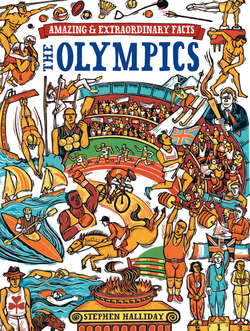Читать книгу The Olympics - Stephen Halliday - Страница 4
На сайте Литреса книга снята с продажи.
INTRODUCTION:
‘THE GREATEST SHOW ON EARTH’
ОглавлениеIn Trafalgar Square, London, on Wednesday 27th July 2011 the Belgian President of the International Olympic Committee (IOC), Jacques Rogge, called upon the athletes of the world to assemble in London exactly one year later for the 30th Olympiad of the modern era for what has been described as ‘The Greatest Show on Earth’. The Mayor of London, Boris Johnson, speaking shortly afterwards, observed that, since the Olympic venues were ready a year in advance, they should call a snap Olympics there and then and catch the world napping. Boris wasn’t quite right. The stadia were built but had to be tried in test events while timing mechanisms and other essential equipment had to be installed. However, it was undoubtedly the case that a previously derelict and much-polluted post-industrial site had been transformed into an Olympic Park and a much-needed green space in a deprived area of East London. This was only the latest miracle in the story of the Olympic Games.
In a sense, by coming to Britain the Modern Olympics were coming home. The ancient games, which ran for over a thousand years, owed their origin to a desire to bring peace to warring Greek city states like Athens and Sparta, and the ancient games had many characteristics in common with the Modern Olympics, including cheating and the adulation of successful competitors. But the abolition of the Games in 393 AD on the grounds that they were pagan meant that they were forgotten for almost 1500 years except in England where the Olympic Games were remembered and celebrated by a motley collection of scholars, con men and a country doctor. Baron Pierre de Coubertin is rightly credited with being the inspiration behind the Modern Olympics. But it is usually forgotten that he drew his inspiration from some unlikely figures including Doctor Thomas Arnold of Tom Brown’s Schooldays at Rugby School and Dr William Penny Brookes whose ‘Much Wenlock Olympics’ from 1850 inspired the Frenchman to press ahead with plans to revive the Olympics, beginning at Athens in 1896. The Paralympics were also inspired by an English doctor, Sir Ludwig Guttmann, whose work at the spinal injuries unit at Stoke Mandeville Hospital, Buckinghamshire, led him to conclude that exercise was beneficial to seriously injured people. It is not by chance that the mascots for London 2012 are called ‘Wenlock’ and ‘Mandeville’.
The Modern Olympics are undoubtedly a triumph and have more than justified their motto ‘citius, altius, fortius’ (Latin for faster, higher, stronger) as records are broken at every games. But they have also been dogged by controversy and involved some very strange people. These range from the man who hitched a lift to win the St Louis Marathon in 1904 (he was caught out); Communist and African dictators who were awarded the Olympic Order for illustrating the Olympic Ideal; drug cheats; and bribery. They have also involved some unusual events including ‘The Old Woman’s Race for a Pound of Tea’ (Much Wenlock, 1850s); live-pigeon shooting (Paris, 1900); the two-handed discus, shot and javelin (Stockholm, 1912); rope-climbing, tumbling and club swinging (Los Angeles, 1932); and medals for art, architecture, literature, painting and music, last awarded in London in 1948.
London thus looks forward to hosting the Olympics for the third time. No other city has achieved this treble though Athens staged the Olympics of 1896 and 1904 and the unofficial ‘intercalated games’ of 1906. Any account of the Olympics, especially one which focuses on records and other amazing facts as this one does, is dependent upon a variety of sources, many of them contradicting one another.
Stephen Halliday
